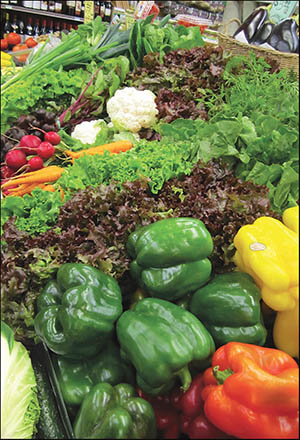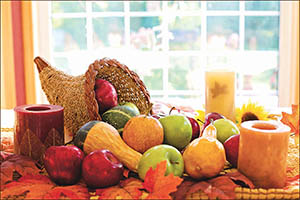Add a nutrient-dense food to your favorite meal of the day and continue adding new foods to your meals one food at a time.
By Alison Crane
Go to any grocery store and you will be bombarded with thousands of choices. Those choices are then influenced by cost, taste, time, skill, etc. Every minute you push a shopping cart down the aisles, you end up making hundreds of choices. “Yes, this is the brand I want.” “No, I will wait until this goes on sale.” “Yes, my family will eat this.”
When it comes down to it, we hear a lot about nutrition but often do not translate what we learn into making good food choices. Studies have shown that the more educated people are about nutrition and health, the healthier they tend to be, but “knowing” has to become action or it just makes a person better at playing trivia games.
Applying what we know can be complicated at times, so start with something simple. Instead of trying to do everything that is recommended for good nutrition, choose one recommendation, and actually apply it.
If you do something long enough it becomes a natural choice and after several weeks of making that good choice, you do not have to work as hard to do it. The idea is to make good choices into habits that are automatic each time you decide what to eat, whether at a store, restaurant, or home.
For instance, you might decide to focus on making every calorie count by choosing nutrient-dense foods. Nutrient-dense foods contain complex carbohydrates, healthy fats, minerals, vitamins, and lean protein which help them pack a nutritional punch. Foods high in nutrients tend to be lower in calories. Making this a habit can actually have several benefits.
Nutrient-dense foods include fruits and vegetables, whole grains, low-fat or fat-free milk products, seafood, lean meats, eggs, peas, beans, and nuts. Try these tips for including nutrient-dense foods in your diet.
- Start by adding a nutrient-dense food to your favorite meal of the day and continue adding new foods to your meals one food at a time.
- When shopping, read nutrition labels to compare foods and brands and pick the item with the highest nutritional value.
- Avoid drinking your calories. Sodas, alcohol, energy drinks, and even juice are high in calories but have little to no nutritional value.
- Choose whole foods over processed foods. Example: an apple versus a fruit snack
The old saying, “You are what you eat,” really is true, but you don’t have to be a rocket scientist to be healthy and make good food choices.
For more nutrition educational resources and programs, contact the Garland County Extension Service at 501-623-6841 or email acrane@uada.edu.
Alison Crane is a Family and Consumer Sciences Agent with the Garland County Extension Service. The University of Arkansas System Division of Agriculture offers all its Extension and Research programs to all eligible persons without regard to race, color, sex, gender identity, sexual orientation, national origin, religion, age, disability, marital or veteran status, genetic information, or any other legally protected status, and is an Affirmative Action/Equal Opportunity Employer.









